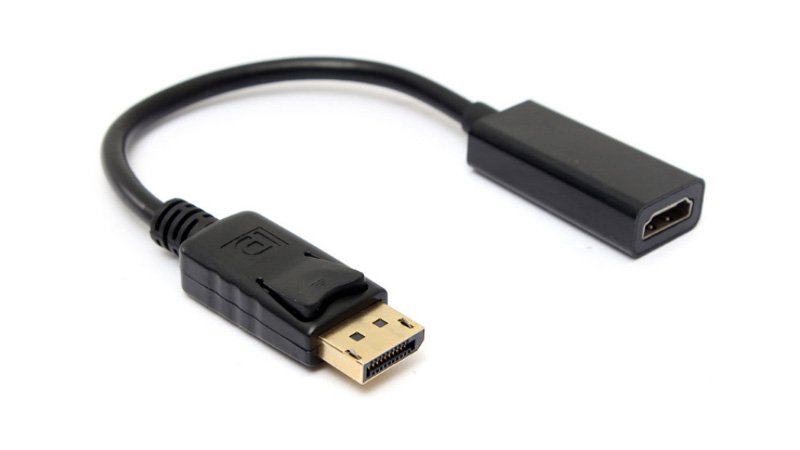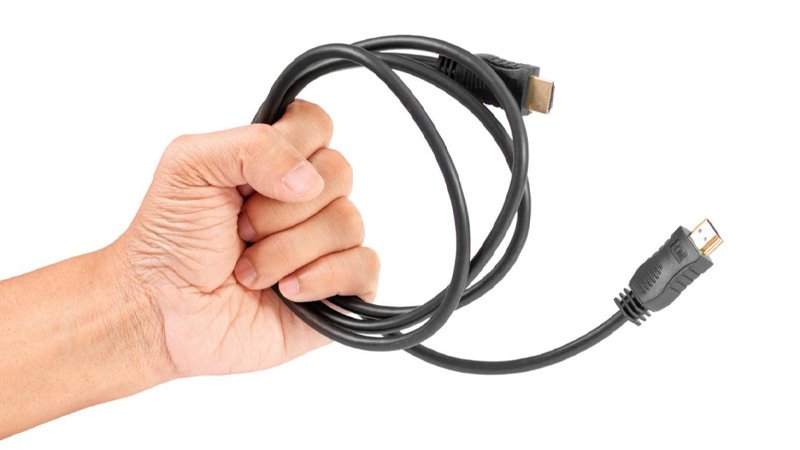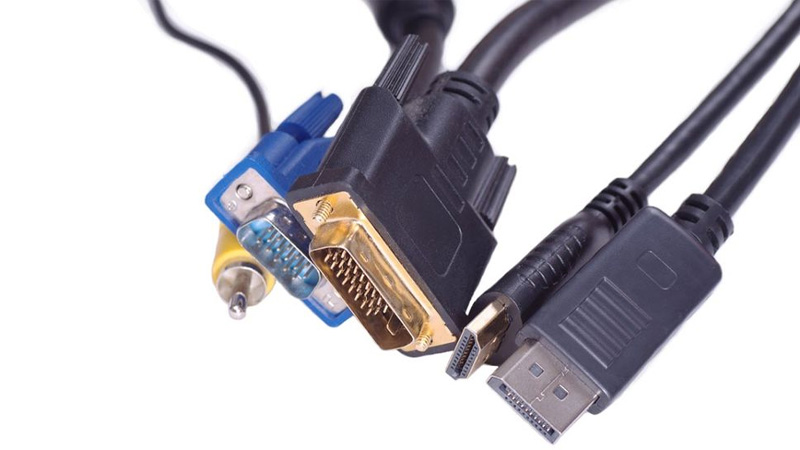When it comes to audio and video ports, two legendary connectors are hailed for their performance and versatility – HDMI and DisplayPort.
Sure, both are used to achieve the same outcome, which is to connect to an HDTV, computer monitor, or any other display unit, some specific dissimilarities between them make them flexible and optimal for different applications.
While some people are hardcore DisplayPort fans, others swear by the effectiveness of HDMI. Considering this, let’s take a deeper look into both types of video and audio ports to help you make up your mind about which to use.
1. A Look into Understanding DisplayPort
2. What is HDMI?
3. Should You Use HDMI or DisplayPort for High-Resolution Videos?
4. What’s Better for PC Display: HDMI or DisplayPort?
5. Understanding Some Important Features Specific to HDMI and DisplayPort
6. Is It Possible to Use an Adapter to Connect DisplayPort in an HDMI Port?
7. Why You Should Consider Using Top-Notch Display Connector Units?
1. A Look into Understanding DisplayPort
Launched in 2006, DisplayPort is the product of an innovative tech company called VESA (Video Electronics Standards Association). The digital display interface was developed as a cutting-edge alternative to obsolete or near-obsolete display technologies such as VGA and DVI.
The display unit was designed to operate both audio and video signals. DisplayPort is typically used across the board for a variety of different applications such as rendering high-quality video outputs and high-def audio outputs.
It is more common in video display units such as projectors and computer monitors. One of the best things about DisplayPort is that it has significantly cut down the need for additional signal cables and wires.
The display unit is available in two sizes, the Mini DisplayPort and the standard version. The former is more typically used in modern screens and display units. However, both variants comprise 20 pins and are locked into the port so that there are no accidental tugs and pulls.

2. What is HDMI?
Developed in 2002, HDMI is an older technology compared to DisplayPort and was launched by a tech company known as HDMI Licensing. Like DisplayPort, HDMI can also render video and audio outputs.
However, HDMI is more typically used in HD and UHD PC monitors, TVs, home theaters, Blu-ray screens, and gaming consoles (PlayStation, Xbox, etc.).
The full abbreviation of HDMI is High-Definition Multimedia Interface. The connectors of HDMI and DisplayPort are the same, however, the former does not have a locking mechanism and comes with 19 pins.
HDMI is available in three distinct sizes, such as Type C (mini-HDMI), Type A (the most common size), and Type D (which is smaller than Type C).
3. Should You Use HDMI or DisplayPort for High-Resolution Videos?
Thanks to the evolution of entertainment technology, home cinemas continue to get even more astounding both in performance and their magnificent audio and display results.
Today, we can watch shows and movies or play games on pristine ultra-high-definition TVs. However, when it comes to watching quality videos, you need to consider an optimal connector for consistency in results and leverage the full benefit of mesmerizing display and audio outputs.
Irrespective of whether you’re playing video games or watching movies, it is always recommended that you consider a display unit that provides a 60-Hz refresh rate. You don’t want choppy or interrupted video quality or fuzzy captions.
When you talk about the best connector for HDTV or home theater systems, HDMI 2.0 or 2.1 is the right choice.
Modern UHD and HD TVs are fitted with an HDMI 2.0 port, which also means that your TV supports HDR (High Dynamic Range). HDR can help make the display even crisper, providing immersive color depth and perception.
However, if your TV has a DisplayPort connector, you should go for a DisplayPort 1.2 cable for enhanced compatibility.

4. What's Better for PC Display: HDMI or DisplayPort?
First, it is important to know that depending on your use-case scenario, both display connectors have varying benefits.
For example, modern PC gaming demands exceptional graphics cards and high-definition display monitors, for this, it is better to go with DisplayPort if your screen has a connector due to its quality rendering. However, if you want to use HDMI, it is optimal to go with HDMI 2.0.
However, if you have a large workstation with multiple display units, it is wise to go with DisplayPort because it is the only type of connector that can help connect multiple screens together on your laptop or PC. HDMI, on the other hand, is only great for connecting to one external screen.
5. Understanding Some Important Features Specific to HDMI and DisplayPort
Both DisplayPort and HDMI are unique thanks to the capabilities they offer. For example, DisplayPort effectively provides MST (multi-screen support), which means you can connect more than one screen to your source device, extending the display output throughout those screens.
In addition, another great thing about DisplayPort is its Adaptive Synch quality. This helps get rid of any chances of screen tearing or choppy display, especially when you’re gaming. It effectively harmonizes with your PC’s refresh rate in line with the output of your graphics card.
HDMI, however, is designed with ethernet connectivity, which makes the display connector excellent for online connectivity and connection sharing without requiring independent ethernet cables. In addition, HDMI is also the best type of display connector for synching with numerous consumer electronic items.

6. Is It Possible to Use an Adapter to Connect DisplayPort in an HDMI Port?
It is common for individuals using a PC to experience display issues such as inadequate connector ports on their screens or laptops. However, there is a very good solution for this. If you are unable to connect to DisplayPort or HDMI ports, you can use high-quality adapters to do the job.
If you have an HDMI port and want to use DisplayPort to maximize your entertainment or gaming experience, you can use a 4K adapter to connect DisplayPort. Similarly, you can use an adapter to convert the DisplayPort display into an HDMI display.
7. Why You Should Consider Using Top-Notch Display Connector Units?
When you talk about enhanced and uninterrupted display performance and output, one can never overestimate the need for a powerful and seamless led display connector. This is essentially where LEDSINO comes in.
Having been operating for more than a decade as a led display unit manufacturer and retailer, we provide individuals and businesses with a variety of rental display connector units for exhibitions, screenings, home theaters, and more.
Two of our most prominent products in this category are the Rental LED Display RX-Series and the Novastar Vx Series Video Controller. The RX Series is specifically designed for enhanced visuals and audio outputs for commercial applications such as large-scale events, exhibitions, and advertising.
On the other hand, the Novastar Vx-Series provides excellent audio and video quality for applications such as stage control systems and fine-pitch applications.

Rental LED Display RX-Series
- Hard Connection, No Need Cables
- Front Service Magnetic LED Module
- Can Removable Back Power Supply Box
- Optional Curved Lock and Bevel Cabinet
- Optional Cabinet Size and Handle Color
8. Bottom Line
So, there you go! The use-case scenarios of both HDMI and DisplayPort, while similar, can make a lot of difference when it comes to the type of application you need them for.
While HDMI is the most used display connector throughout the globe, DisplayPort is excellent for ultra-high-definition displays and resolutions and is great for more data transmission.



